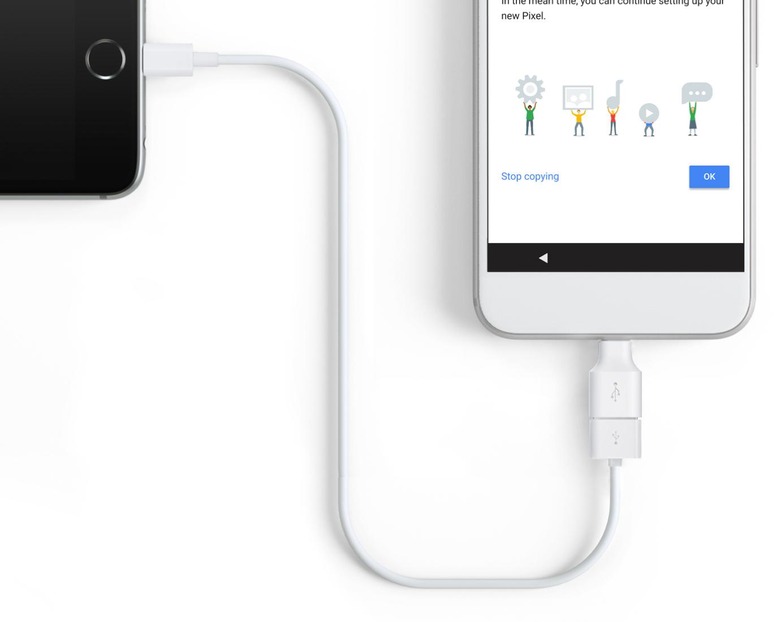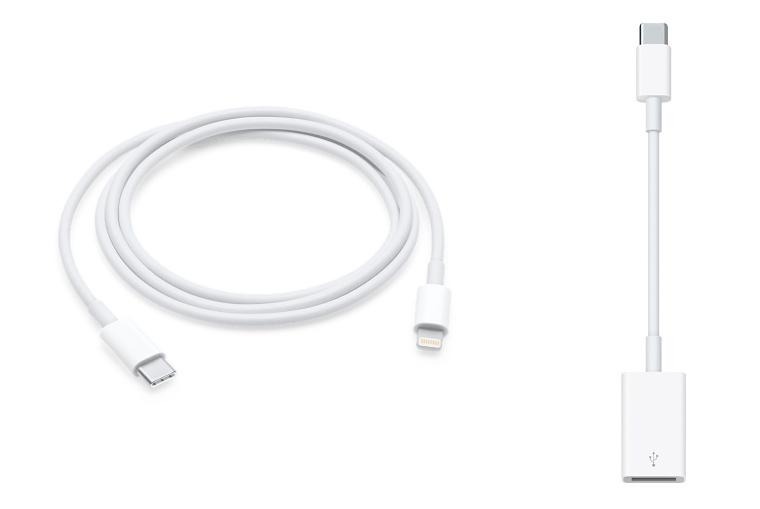Google's Pixel Cords Go "Pro" While MacBook Wavers
Google's Pixel and Pixel XL include a set of cords that put the new MacBook Pro to shame. Even Apple's newest iPhone includes a dongle which connects Lightning to a headphone jack. Now, here in 2016, as Google makes its best effort at a consumer-grade phone, they've gone Pro. Meanwhile Apple has released a MacBook "Pro" with some distinctive non-pro features.
With the Pixel XL comes two cords and a dongle, each of which are robust. More important than their ruggedness is their versatility. With three different wired ways to connect to the Pixel XL, Google tends to several types of user.
Above is an unboxing video showing what comes with the Pixel XL. Note that the contents of the box are the same as those included with the non-XL Pixel – except the obvious. In this box is 2x USB cables, one wall plug, and an OTG Dongle.

The wall plug goes by the name "USB-C 18W adapter with USB-PD" where PD stands for Power Delivery. Also included in the box is a USB-C to USB-C cable – that's the same on both sides. With this cord the user is able to connect to the wall plug as well as other USB-C devices.
Connecting USB-C to USB-C provides abilities previous USB cords were not capable of. One can, for example, use one phone's battery to charge up the battery of another phone. USB-C also has all the abilities of the past micro-USB solution. This includes audio and video output, too.
Google also includes the OTG Dongle for what they suggest is the transfer of data from our old phone. That includes any Android phone or the iPhone, and the transfer is quite painless. But this dongle/adapter does a lot more than just act as a bigger port.

Apple should be including an accessory like this OTG Dongle with their MacBook Pro. A converter should be in the box by default, if only for the people who are transitioning to USB-C over time. Apple already includes such converters with products they currently sell.
The headphone jack converter for iPhone 7 most iPhone fans know about. The Apple Pencil, too, includes a converter plug. For those that wish to charge the Apple Pencil with a Lightning cord, the Lightning adapter is great. Apple also includes an extra tip in the box.

But what of the MacBook Pro, the device that until this generation had at least two USB ports (the big kind). It also had an SD card slot and a couple of Thunderbolt ports for video or super-fast data transfer. At least the MacBook Pro still has its headphone port.
If a user buys a MacBook Pro and an iPhone or iPad right this minute, they'll need to buy a converter to connect them. They can connect wirelessly, true, but to connect with a wire, they need another piece of equipment. That might seem like a non-issue to future users, but today, to me, it seems like inconsistency.
So, again, the Google Pixel, a smartphone, has more options included in its box than the MacBook Pro. If you want to connect your non-USB-C devices to a Pixel phone, you're set. If you want to connect your non-USB-C devices to a MacBook Pro, you're gonna need to buy an extra accessory. What kind of backwards madness is this?
